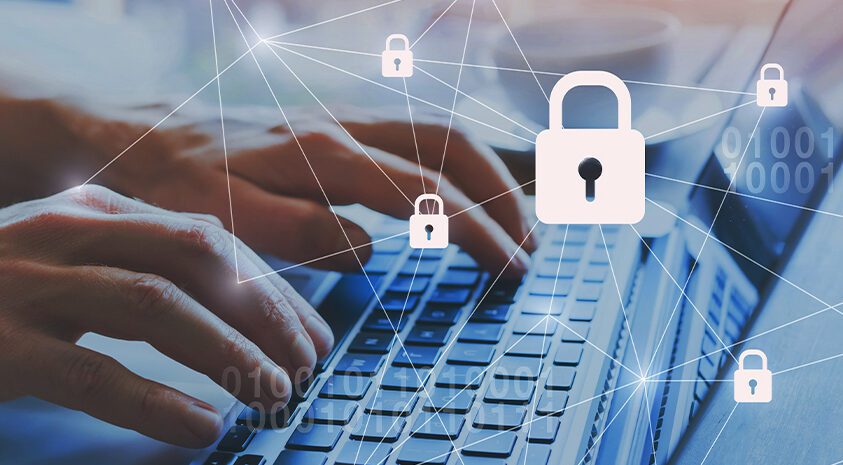If you’re getting everything in order for retirement, you’ve probably given a lot of thought to your possessions. Most likely, you have made a list of your assets, reviewed your estate plan, and implemented any changes into your will.
However, there’s one crucial piece of the puzzle that many soon-to-be retirees overlook: digital assets.
Digital assets, or any of your possessions that are in a digital format, are equally as important to review. If you don’t get your digital assets in order when planning for retirement, you’re leaving yourself vulnerable to data breaches or identity theft.
Here are some helpful tips for estate planning for digital assets and protecting digital assets after death.
What Are Digital Assets?
Digital assets can be defined as any belongings that are in an electronic form or live online. These assets might be located on your computer, your smartphone or other mobile device, on a hard drive or flash drive, or simply on the internet. The average American has $55,000 in digital assets.
Digital assets examples include things like:
- Websites or blogs. If you have a website that brings in revenue for you, this is a digital asset. It’s important to think about what you want to happen to this website after your death.
- You might have digital files including photos, videos, movies, songs, or subscriptions. Anything you own the digital rights for counts, too.
- Online accounts. Maybe your grandkids still haven’t convinced you to join social media. But chances are, you have at least one email address. Your heirs will need to deactivate these accounts. And it’s not just social accounts that matter—you might also have shopping accounts, photo sharing accounts, or online storage accounts.
- Intellectual property. Have you copyrighted or trademarked any material? This is a digital asset.
- Financial accounts. This is an important one—any money that’s stored in digital form, such as a bank account or PayPal account. Cryptocurrencies are also digital assets.
- Personal information. Finally, you’ll also want to take into account any additional sensitive information that is stored electronically or digitally, such as your Social Security Number or tax returns.
Your estate planning includes all of your physical assets and belongings. It only makes sense to think about your digital possessions, too.
Why Protect Digital Assets?
There are several reasons why it’s important to include digital assets in your estate planning. The first and most important is to protect yourself against data breaches and identity theft. Identity thieves use the identities of almost 2.5 million deceased Americans each year, both deliberately and by chance.
It’s also worth noting that your family needs access to your digital assets. Whether they want to print family photos, turn your Facebook page into a memorial page, or access money from your PayPal account, it’s important to make sure your family members are able to get anything they might need or want.
3 Tactics for Protecting Your Digital Assets Into Retirement
Make A List
The first thing you should do is take inventory. Make a list of all your digital assets, referencing lists of digital assets examples if you need help figuring out what counts. When in doubt, write it down. Even inactive accounts should be included on this list.
You should also write down what you’d like to happen to each account. For example, maybe you want your website to be kept as-is, but your Facebook account to be completely deactivated. Designate someone in your will who can take care of your digital estate.
Assets with monetary value can be included in your will. Other digital assets might not be applicable to your will. Regardless, decide what you’d like to happen to each of your digital assets.
Recognize the Importance
If your digital assets aren’t taken care of correctly, your information is left vulnerable to data breaches and identity theft. Criminals who get access to your personal information might use it to open a new credit card in your name, withdraw money from your bank account, sell your information to other nefarious people, and more.
You can protect your digital assets while still alive by using strong passwords; using secure websites and WiFi networks; and regularly monitoring your transactions and credit report. Implement a backup plan for your digital assets, too.
After your death, make sure your information stays safe by giving instructions to your lawyer and your family so they can properly close everything down.
Give Your Family Instructions
If your family doesn’t know about your digital assets, they will be unable to access them. Since identity theft can even happen after you’ve passed, your family will need to take care of your online accounts.
Give your lawyer all of your passwords so they don’t fall into the wrong hands before your death. You should also note which email address is associated with each account in case the account requires two-factor authentication.
This might sound like a lot of work. But it will all be worth it when your loved ones are able to easily access and protect everything you own—digital possessions included.
Be Prepared
Where privacy or security might be in question, the confidence inspired by a personal interaction could be required. Enter insurance agents. Our representatives with Bankers Life can help you get everything in order, protecting yourself as you move toward retirement. Learn more about our services here.



